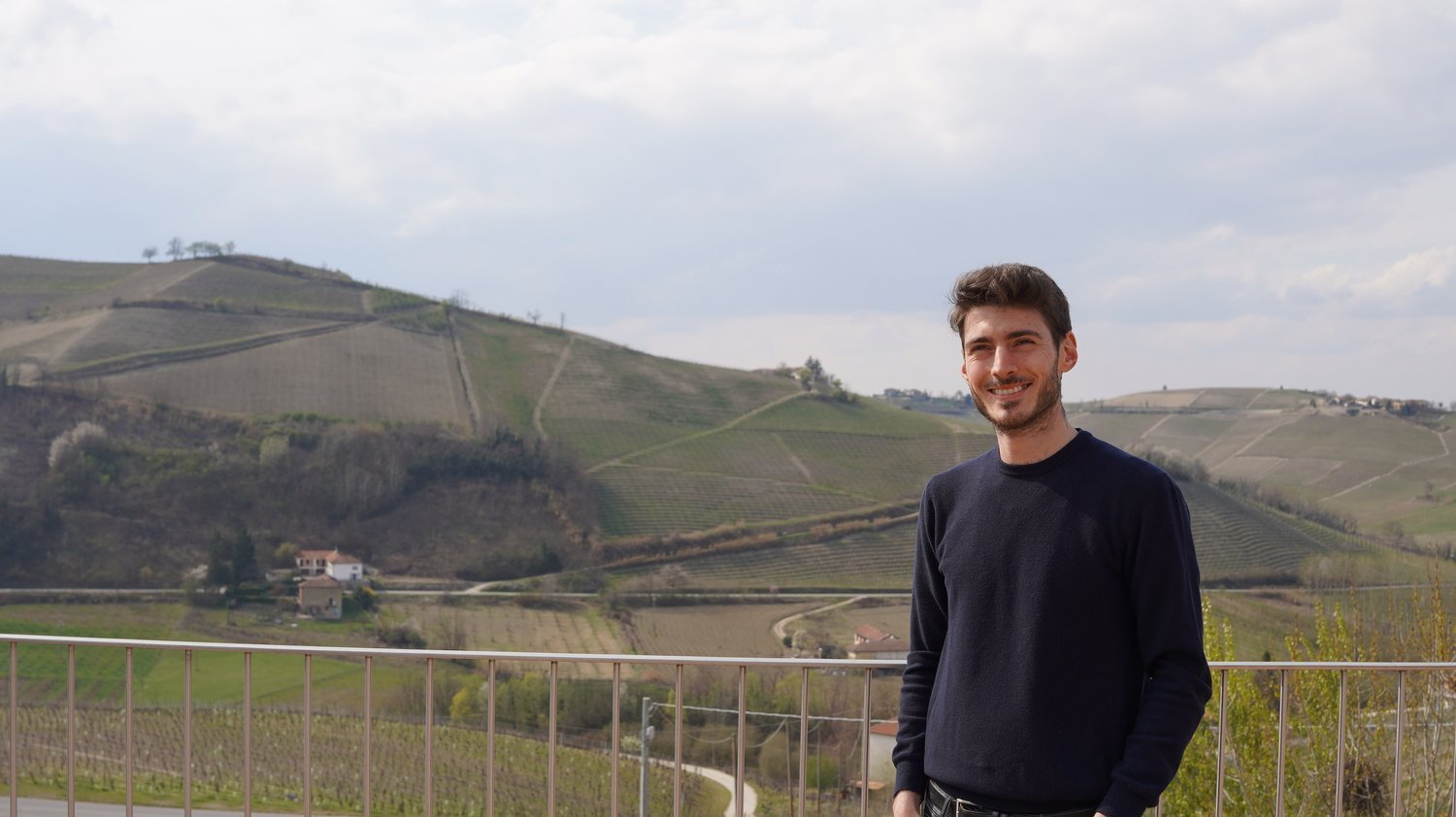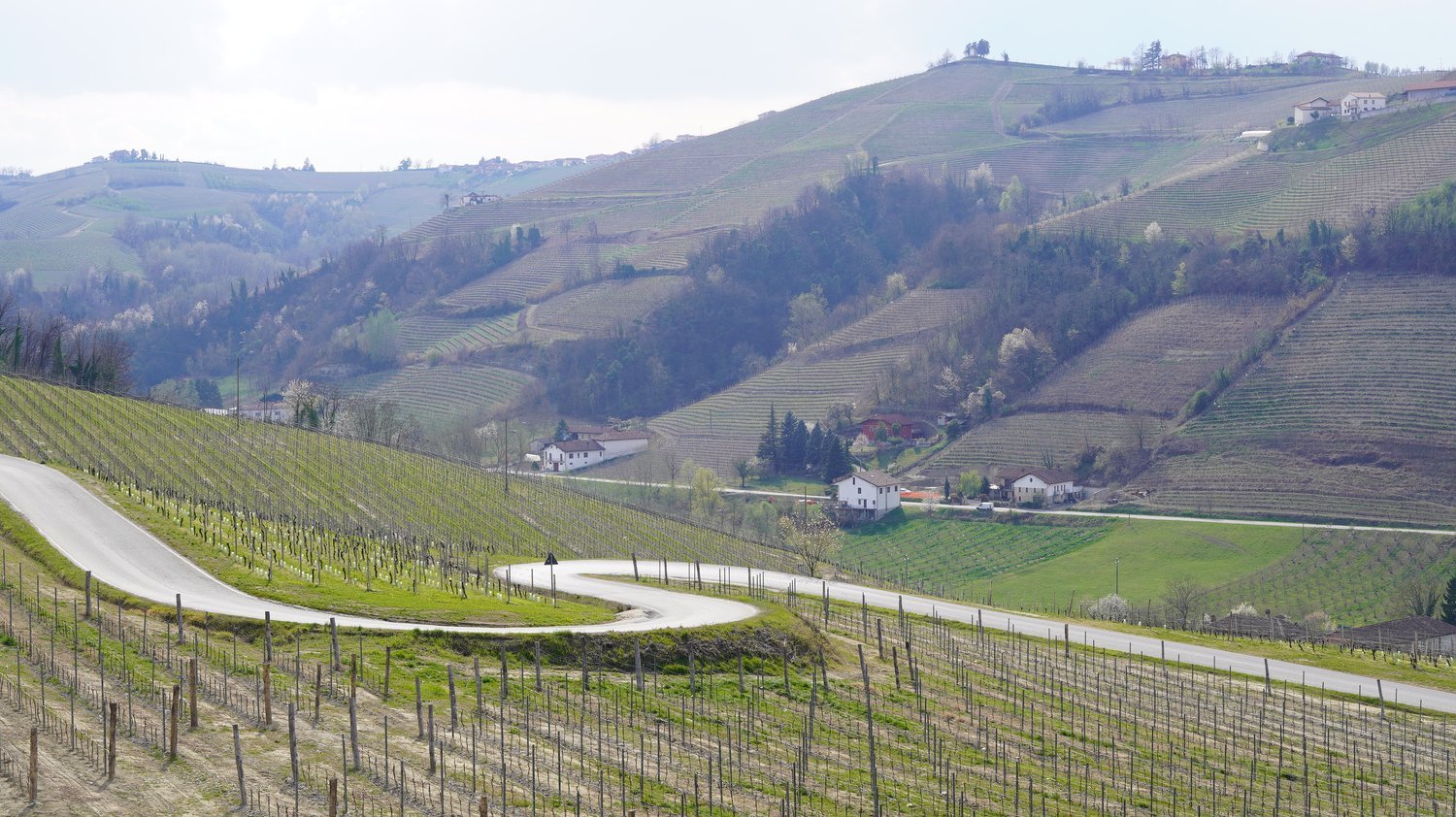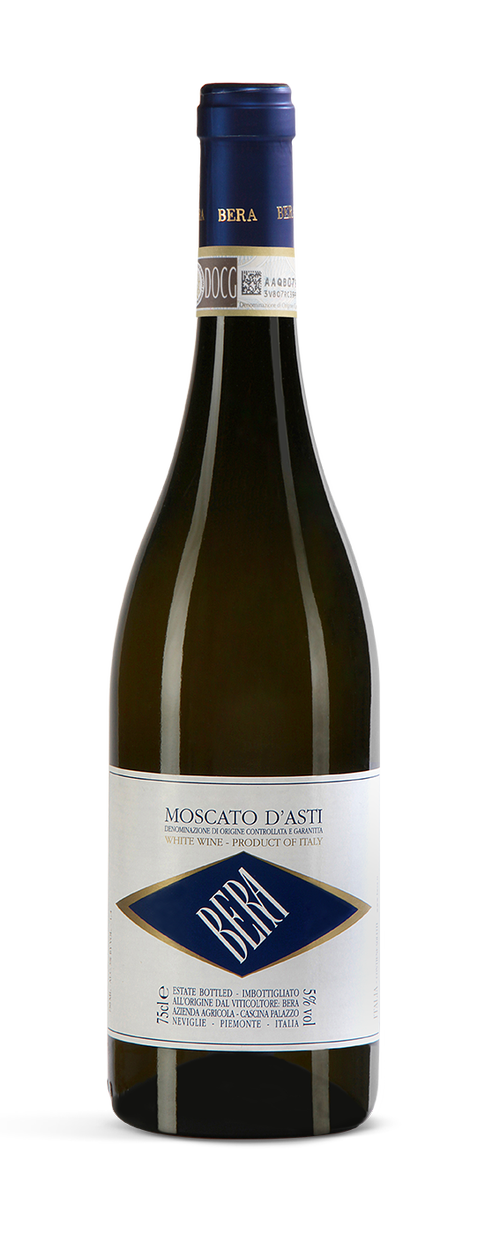Bera
Neviglie, Piedmont
The vineyard has been the heart of the philosophy at Bera since the first generation began tending the rolling hills of Neviglie just south of Barbaresco township in the 50’s. Now the estate owns just over 30 hectares of prime growing land around the communes of Neviglie, Neive and Barbaresco, with the incredible new addition of perhaps the most revered vineyard in all of Barbaresco; Rabaja. Whilst the estate’s flagship has always been their delicately fragrant and extremely energetic Moscato, today the younger generation – Riccardo and Umberto – look towards their future as custodians of some of Piedmont’s greatest areas for the production of very fine Nebbiolo.
In the winery the production remains simple, honest and traditionalist Piemontese; long macerations, large neutral oak and minimal intervention, with the aim of expressing the earth and the air of the Langhe in every one of the wines produced here. Production remains consistent at around 10,000 cases per year, with the majority being Moscato d’Asti whilst the red wines are produced from single bottle, each holding around one hectare’s worth of juice per wine per vintage Long macerations, large neutral oak and minimal intervention, with the aim of expressing the earth and the air of the Langhe in every one of the wines produced here.
2022 Moscato d’Asti
Right at the top of the ladder of classic Piedmontese sparkling wines sits Bera’s Moscato d’Asti. Over the past 8 years, Umberto and Riccardo Bera have grown the vineyards, diversified the varieties of their wines, and modernised the winery, whilst honing in on this true art form and style of wine that has made their good fortune for so many years, and many more to come. The Stelvin cap closure does a great job of preserving the frizzante spritz and letting it out with the most satisfying sound. A must with torta di amaretti or stuffed peaches.
Winemaking:
The fruit was hand-harvested from sun-drenched east-south and south-west facing slopes between the first and the third week of September. Valter Bera is among the very best of small-scale Moscato d’Asti producers and strives to honour this iconic historic wine’s small-winery roots, by stripping it back and thoughtfully implementing the Martinotti method..
Tasting Notes:
Its pale-yellow hue and highly aromatic nose conjure sun-ripe apricots, creamed honey, and the exotic charm of a resinous mango. There are hints of dried apple, and the benchmark Moscato notes of lychee and musk flavouring the sweet palate. It is beautifully balanced with perky acidity, a conservative alcohol level and a delicate froth brightening the finish.
2022 Dolcetto d’Alba
Dolcetto may come off more as a short-term drinking solution, but producers like Bera who recognise its appeal, celebrate it. And more fervently than ever, judging by the excellent 2018 and 2019 vintages. This Dolcetto d’Alba is a fruit-driven, palate pleasing, everyday guzzling alternative to more robust Barbera and Nebbiolo. It has a charming simplicity that comes from having been grown on higher grounds. Match it with Corzetti topped with marjoram pine nut pesto, also a regional favourite.
Winemaking:
The grapes were hand harvested between the second and third week of September from east, south and west facing slope. They were destemmed, crushed, then fermented naturally in stainless steel, where the skins were left to macerate for a short time. It went through malolactic conversion before clarification and was finally bottled in Spring to retain optimum freshness and varietal expression.
Tasting Notes:
The bright ruby red core and purple reflections set the tone for a most charming encounter. It has a heady bouquet of ripe cherry, blueberry, and hints of star anise and fresh rosemary. The palate is fleshed out by intense sweet berry characters, highlighted by a moderate acidity and fine, dusty tannins. Simple and highly effective with a lip-smacking tartness on the finish.
2022 Barbera d’Alba
Walter Bera has dedicated considerable time and energy to making the wines of the Neviglie area known and appreciated. Across the Tanaro river, lither Barbera d’Alba thrives on Astiane sand-rich soils that impart the wines a certain sapidity and readiness to enjoy. Such is the synergistic connection between the soft sloped terroir of Neviglie and Bera’s Barbera d’Alba. Surrounded by the villages of Barbaresco, Neive, Mango and Treiso, Neiviglie is where the Bera old master house, new living quarters and wine cellar can be found. This Barbera d’Alba unveils darker fruit and less marked acidity, with a formidable structure that often characterises the Serralunga d’Alba crus. Every bit of it is worth the sacrifice of a few Barolo vines. Braised rabbit and olives make the perfect match.
Winemaking:
The grapes were harvested from east, south and west facing slopes at the end of September. They were destemmed and crushed, then fermented for a week at controlled temperature. Once decanted and racked, the wine was stored in tanks until Summer, while malolactic conversation took place. The wine was aged in bottle for 6 months before release.
Tasting Notes:
The rich, deep dark ruby tone is echoed by intense blackberry, sweet blackcurrant, black olive tapenade, charred meat and liquorice characters on the nose and the palate. The fine, juicy tannins are in total harmony with the dense fruit characters, making for a long, morish finish.
2022 Langhe Nebbiolo ‘Mio Vino’
Proof that Neviglie, and especially Bera, doesn’t limit itself to excellent Moscato. In fact, the ‘Mio Vino’ Langhe Nebbiolo shows that where there’s a will, there’s a way. Here, commitment, experience and ability conspire to produce a compelling Nebbiolo.
Winemaking:
The fruit grows on East and West facing slopes composed of calcareous clay soil. The grapes are hand harvested and carefully selected. Once destemmed and pressed, the must is fermented in stainless steel tanks. It’s left on skins for up to 10 days, depending on the wine, to allow gentle extraction of tannin, varietal characters, and colour, while fermentation takes place. After malolactic conversion, the wine matures in large oak barrels or about 12 months. It’s bottle aged for 12 months before release.
Tasting Notes:
This is a more candid wine suitable for immediate drinking, with intense red and black berry flavours, and broad tannins making up a generous palate. The tannin structure is soft and makes for a delicate finish.
2020 Langhe Nebbiolo ‘Alladio’
Quite the complete rendition of Langhe Nebbiolo, this wine is fashioned identically to the Barbaresco, except for the vineyard location, 500 meters short of the Barbaresco zone. This is structured, beautifully layered Langhe Nebbiolo, just as one would expect from a single site capable of putting out DOCG grade wines. With shorter cellaring time, it boasts the thrilling appeal of its youth.
Alladio is not mini-Barbaresco, it’s structured, layered Langhe Nebbiolo from a single site that delivers.
Winemaking:
The fruit grows on a 50-year-old South-East facing vineyard situated classic Limestone over blue marl. It’s hand harvested at the end of September, early October. The grapes are destemmed and crushed, then fermented for a week in stainless steel. It’s left on skins for 28 days. After malolactic conversion, the wine is left to age in large oak barrels for 24 months. The wine’s aged in bottle for 12 months before release.
Tasting Notes:
It’s garnet red coloured with orange tinges. It has an ethereal and persistent fragrance reminiscent of violet and rose scents. It has a more obvious, fruit-forward nose leading onto a dry, well-structured palate. It’s pleasantly savoury and generous, with well-integrated, sweet tannins making for an easy-going drinking experience.
2020 Barbaresco
This is an incredible interpretation of both Barbaresco terroir and the memorable 2019 vintage. The Bera family’s investments in top vineyard sites in Neive are paying off with this ‘regular’ Barbaresco, which is made up of half and half fruit from Basarin (South-West) and Serraboella (East), two sites that instill equal parts balance and structure.
Winemaking:
The fruit comes from the younger vines within the Basarin and Serraboella crus, at 250 meters above sea level, on East, South-East, and West facing slopes composed of limestone and clay over blue marl. It’s hand harvested, destemmed and crushed. The must is fermented for 2 weeks, then aged in small barrels for 24 months. It’s bottled-aged for 8 months before release.
Tasting Notes:
This Barbaresco has a garnet red colour with orange tinges. In the glass it gives off ethereal and spicy fragrances, with light vanilla and flowery notes. It’s generous and on the fruity side, yet has an elegant, very delicate demeanour – sour cherry, black plum, blueberry, hints of cardamum and vanilla spice. The tannins chalky and powdery. It’s well-balanced with a persistent finish.
The altitude of Bera's vineyard is relative high - 320-380 metres - with a southeast exposition for the Barbaresco vines. Red fruit aromas pack a punch, along with rose and water and cinnamon sweetness. The multi-dimensional profile dominates the pallet as well, with pomegranate and red cherry pulp. The structure follows, with fierce, slightly austere tannins on the finish and crisp acidity. Barbaresco for the long haul. Drink 2022-2039. 94 pts Decanter
2019 Barbaresco ‘Serraboella’
Since its inaugural 2016 harvest, the Serraboella Barbaresco has given Riccardo and Umberto impetus to produce a Nebbiolo that is so different from every other Nebbiolo they make. Though fruit from Serraboella still makes up about 50% of Bera’s classico Barbaresco, it has found its own voice here.
Winemaking:
100% Nebbiolo from Bera’s small holding on the Serraboella vineyard, located East of Neive, Barbaresco. The vineyard grows on limestone and clay, over blue marl, at some 250-270 meters above sea level. The must spends 20 days or so on skins. Once malolactic conversion is complete, the wine is aged in large oak barrels for 24 months. It’s aged in bottle for 12 months before release.
Tasting Notes:
A more rustic style, made up of red apple skins and cherry. Some raspberry and cherry ripe characters hinting to a tart, savoury palate, complemented by dusty, drying tannins. The finish has attractive herbal notes adding complexity.
2015 Barbaresco ‘Serraboella Riserva’
As part of Tenuta di Tavignano’s latest project, the ‘I Love Monsters’ range, this Rosato Frizzante uses the ancestral winemaking Pét Nat method to shine a light on Le Marche’s very own Lacrima grapes. After nearly vanishing during the phylloxera wave of destruction that swept through Europe in the 19th Century, Lacrima di Morro d’Alba was saved and nurtured back to life by dedicated growers. Today, it is one of the jewels of Le Marche – full of aromatic appeal and extremely drinkable – its name includes the village of Morro d’Alba (DOC), the epicentre of its production. Morro d’Alba is nestled among the rolling hills of the province of Ancora, between Senigallia in the North and Jesi in the South. It is also renowned for Ciauscolo, Le Marche’s famous spreadable salumi.
Winemaking:
The fruit was hand-picked from organically farmed, South-East facing vines situated on the gentle-slopped hills of the Colline di Tavignano. Only the free run juice was used, with the slightest salmon pink colour extracted from the skins. Lacrima grapes have deep colour, but soft tannins, making the resulting wines best enjoyed young. The first fermentation took 14 days in stainless steel, after which the wine underwent the secondary fermentation in bottle, and got released without final disgorgement.
Tasting Notes:
There are vivid aromas of guava, rose water essence, orange blossom, and buttered toast with strawberry jam, from the presence of yeast. The palate is dry, with sweet vanilla flavoured whipped cream overlaying juicy cherry, raspberry and strawberry. It is supported by a good acid vein that keeps the finish clean as the tingling mousse dissipates.
2013 Barbaresco Riserva ‘Basarin’
Situated on the border of the commune of Neive and within arm’s reach of Barbaresco-township and Treiso, Basarin has become increasingly sought-after as a site for the production of nervy, elegant Barbaresco wines with Neive’s classic tannin structure. The Bera’s historical planting here justified the Riserva designation, and this wine spends a long 5 years in large Slavonian cask before being bottled. This is the new-for-2022 Basarin Riserva, being released nearly a full decade after the harvest.
2015 Barbaresco Riserva ‘Rabaja’
If such a classification existed in the Langhe, Rabaja would be deserving of ‘Grand Cru’ status owing to its very favourable position within the Barbaresco commune and the myriad exceptional producers which source fruit from it. Through a stroke of luck some years ago, Walter Bera’s family was able to purchase a considerable 0.5ha holding of the site and begin producing a wine that they immediately classified Riserva.
2019 Barolo
Here’s an elegant, austere Barolo cultivated in Castiglione Falletto, made in true Langa tradition. Castiglione Falletto is at the confluence between Barolo’s Elvesian and Tortonian soils, with younger Sant’Agata fossil marls dominating. Thanks to a mix of clay, silt, magnesium and manganese that give it a blue-grey colour, the wines have a haunting fragrance sublimely combined with imposing tannins. Its eastern side is gently warmed by the morning sun, where the vineyards remain relatively cool compared to those on the western side.
Winemaking:
The fruit grows on calcareous clayey soil. It’s hand harvested at the end of September, early October. The grapes are destemmed and crushed, then fermented for 2 weeks in stainless steel. After malolactic conversion, the wine is left to age in large oak barrels for 24 months.
Tasting Notes:
It displays a garnet red colour with warmer tones and reflections developed over time. In the glass it gives off ethereal and spicy fragrances, with light vanilla and flowery notes. The palate is complex with frangipane, bitter almond, and sour cherry flavours. It’s clear, clean cut with more of those bright floral characters (rose and violet) and some star anise and liquorice. The tannins are clayey, powdery even, resulting in a velvety texture. It’s well-balanced with a long, generous finish.
An extremely pale wine with an orange tinge in the glass that exactly describes the character of the vintage. On the nose the wine is focused on a blood orange aroma, with cinnamon and chalk dust. Despite the brightness and the open-knit character, there is no lack of tension. Vibrant red currants are joined by good acidity and firm tannins, with a chalky finish. It lacks a bit of persistency, however the bitter rhubarb finish is pleasant enough. 92 pts Aldo Fiordelli, Decanter
2017 Barolo ‘Mosconi’
South of Castiglione Falletto sits Monforte d’Alba. The vineyards that constitute it produce dark, rich and earthy wines that pack a powerful punch. They’re also known for their firmness and concentration. The Mosconi vineyard stands out for producing wines that display hints of red liquorice (as opposed to black liquorice characters associated with the rest of Monforte d’Alba). In addition, they’re quite broad.
Winemaking:
Monforte d’Alba old vines produced this exceptional fruit. This is the most prestigious areas in the entire Barolo denomination, famed for producing wines that have great complexity, elegance, and longevity. It’s minimally handled and vinified with the gentlest approach – fermented in stainless steel tanks and maceration on skins for up to 2 weeks, or more depending on the year. The wine is further aged in large oak barrels for up to 30 months, including a bit of time in French oak barrels for 12 months.
Tasting Notes:
An archetypical Barolo - Clear and intense aromas of Maraschino cherry, floral characters of rose and violet, some frangipane, liquorice, and especially tar. The tannins are mineral and dusty, they intricately meld with the compact fruit flavours. The fine acid line underpins the flavours and adds a beautiful length to the finish.
Aromas of black-skinned berry, underbrush and leather lead the way. The elegantly structured palate offers dried black cherry, licorice and cinnamon alongside polished tannins. Drink 2023–2029.
91 pts Kerrin O’Keefe, Wine Enthusiast

















